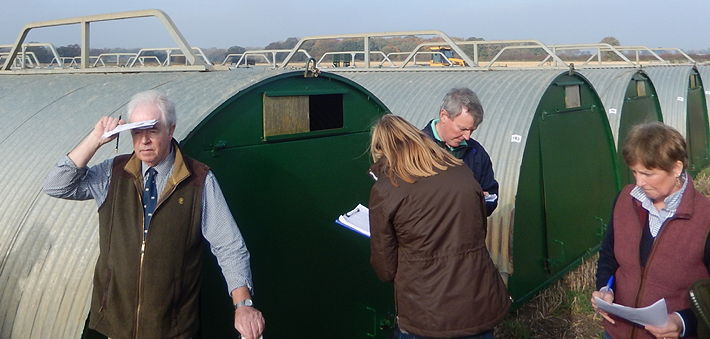After a period of steadily rising UK pig meat prices, signs are emerging that this sector may be on a slippery slope.
Although the latest SPP has only eased marginally, falling 0.14p to stand at 165.36p, there may be further moves in the downward direction in line with several major EU producer countries in the weeks ahead.
The latest German pig price is quoted at €147, which is equivalent to 133p in our currency.
For the first time since December, weekly contribution prices have taken a backward step with between 1-2p being trimmed off prices most of which are now between 154p and 164p and have something of that sinking feeling as we look ahead.
Spot prices have also provided a significant indication of price weakness although volumes remain low with spot bacon worth in the 158-160p region and lagging behind the SPP to the tune of around 6p.
We may be at the bottom of a trough as far as sow prices are concerned (unless the trough has a hole in it), with reports of some of the larger EU processors being able to increase volumes to some extent now that some (but not all) are making progress to comply with Covid-19 requirements. But until this work is completed cull sow prices are expected to remain under pressure with values in and around 45p but a touch more for larger loads also helped by the slightly stronger Euro which traded today worth 90.75p compared with 89.62p a week earlier.
Weaner prices are holding steady with the latest AHDB 30kg ex-farm average quoted at £60.84 and the 7kg average at £42.72. Although rearing and finishing space is still scarce, one or two of the larger players have indicated they might be able to take better numbers in the weeks ahead, we shall see.
There are still some flickering warning lights as far as feed prices are concerned, with the latest UK feed wheat futures price up by £2/t to £173 for September and barley worth £141 for the same month.
Soya on the other hand has eased marginally with Hipro soya traded at £301 on the futures market for August-October and the same price for May-October 2021.
With the combines about to start on winter barley crops in the Eastern Counties, yields look better than they did earlier in the season, although bushel weights are in some cases still on the low side and it will be interesting to see how yields of wheat in a few weeks’ time compare with earlier forecasts, but the general consensus seems to be that most cereal crops will yield slightly better than was the case during our mini-drought period in the late Spring.
And finally, events in China and the Far East will continue to dominate global pig meat markets with reports that the Chinese pig herd is recovering and the supply of live pigs in June was around 340 million head which is an increase of almost 10% compared with the end of the year and the number of sows in China has also been growing and has increased by around 30% over the past 9 months.
Pork exports provide a lifeline for pig producers around the world and pork imports to China are forecast to increase for the first 5 months of this year by 1m tonnes compared with last year which represents an increase of almost 150%.
Hopefully, this relationship will not be adversely affected by the current spat between the UK and China over freedom of speech in Hong Kong or the withdrawal by the UK Government of the Huawei computer contract dispute, not to mention the outcome of Brexit and the effect that this could have on UK pig prices.




